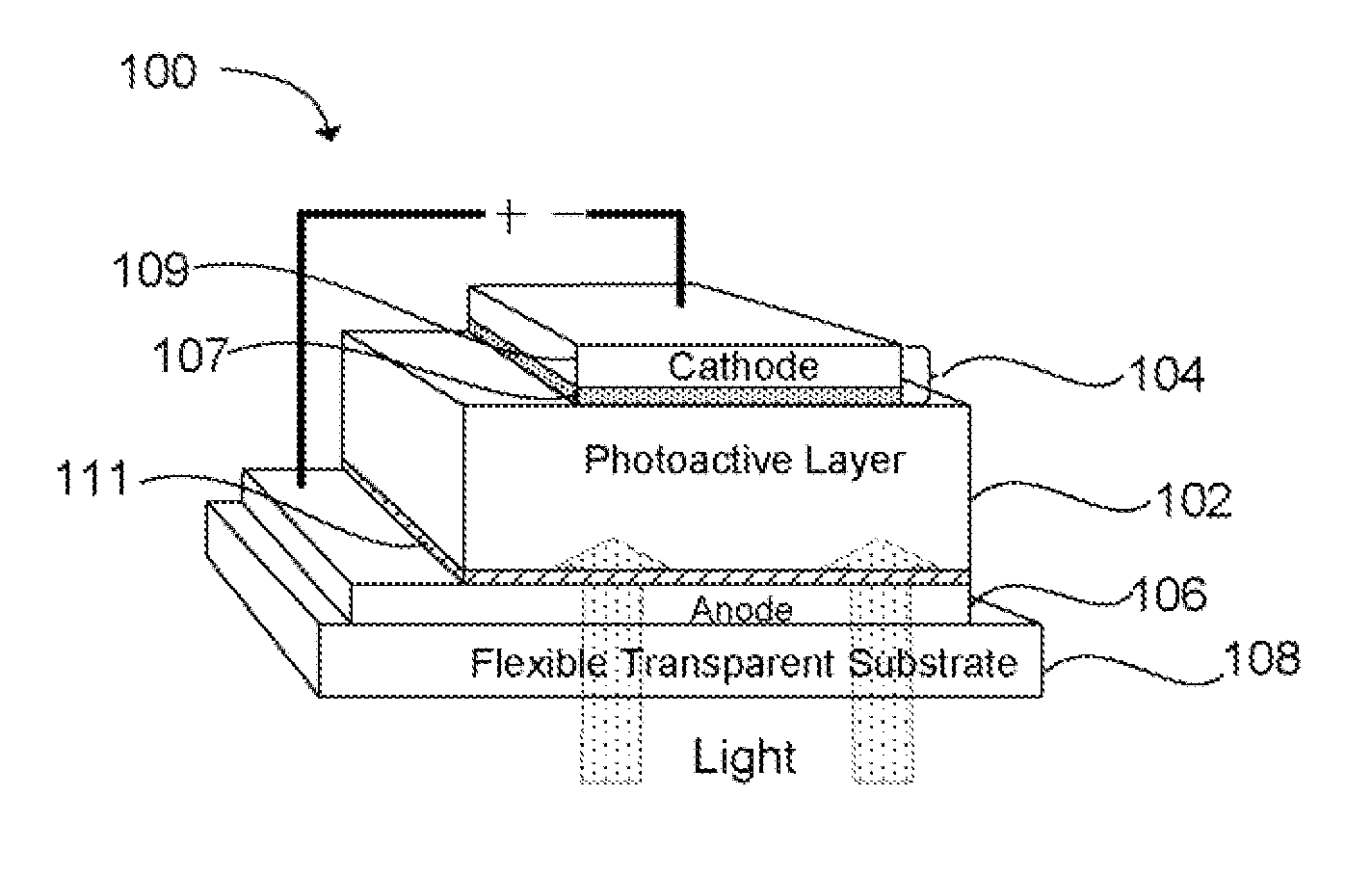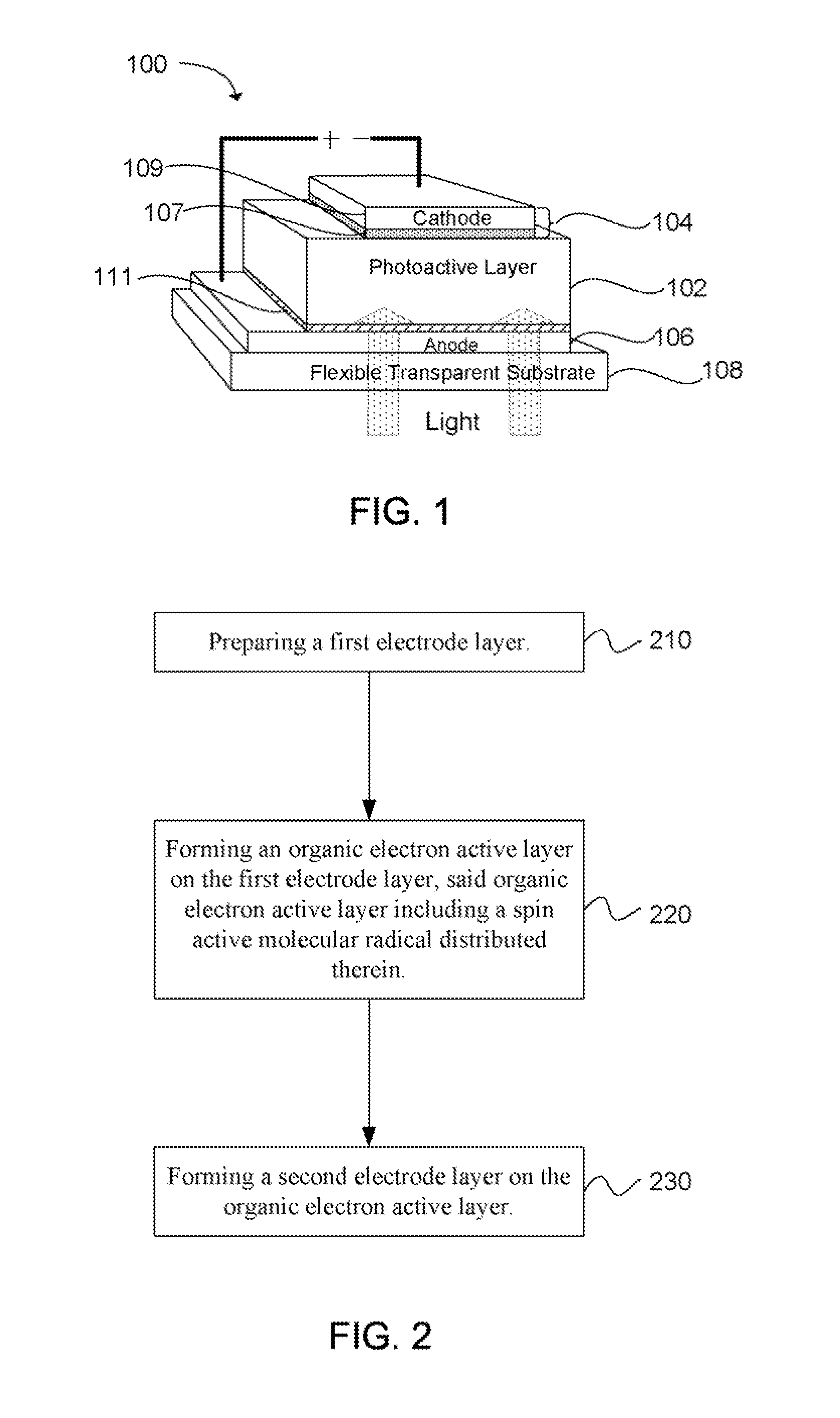Organic Spintronic Devices and Methods for Making the Same
a spintronic and organic technology, applied in thermoelectric devices, solid-state devices, nano-informatics, etc., can solve the problems of environmental damage and/or risk, none of these energy sources satisfactorily eliminate environmental concerns, widespread use, etc., to improve the efficiency of oled and charge mobility in fet devices, and increase the relaxation rate of spin lattices
- Summary
- Abstract
- Description
- Claims
- Application Information
AI Technical Summary
Benefits of technology
Problems solved by technology
Method used
Image
Examples
examples
[0067]Without being bound to any particular theory, one of the main contributing factors to the low efficiency appears to be the low output current due to the high carrier recombination rate and low carrier mobility. In bulk heterojunction organic photovoltaics, the accepted mechanism for current production is the following: First, upon illumination, there is exciton generation in the blend, followed by a migration of the exciton to the donor-acceptor interface where, either because of the existence of a build in potential or the dipole interaction between the donor and the acceptor, this exciton is separated into a free electron in the acceptor material and a hole in the donor material. From this point, the electron and hole migrate to the cathode and the anode, respectively. For efficient device performance, one has an exciton diffusion length that is larger than the average donor or acceptor aggregate size to minimize exciton recombination. For efficient exciton separation the ex...
PUM
| Property | Measurement | Unit |
|---|---|---|
| wt % | aaaaa | aaaaa |
| wt % | aaaaa | aaaaa |
| wavelength | aaaaa | aaaaa |
Abstract
Description
Claims
Application Information
 Login to View More
Login to View More - R&D
- Intellectual Property
- Life Sciences
- Materials
- Tech Scout
- Unparalleled Data Quality
- Higher Quality Content
- 60% Fewer Hallucinations
Browse by: Latest US Patents, China's latest patents, Technical Efficacy Thesaurus, Application Domain, Technology Topic, Popular Technical Reports.
© 2025 PatSnap. All rights reserved.Legal|Privacy policy|Modern Slavery Act Transparency Statement|Sitemap|About US| Contact US: help@patsnap.com



